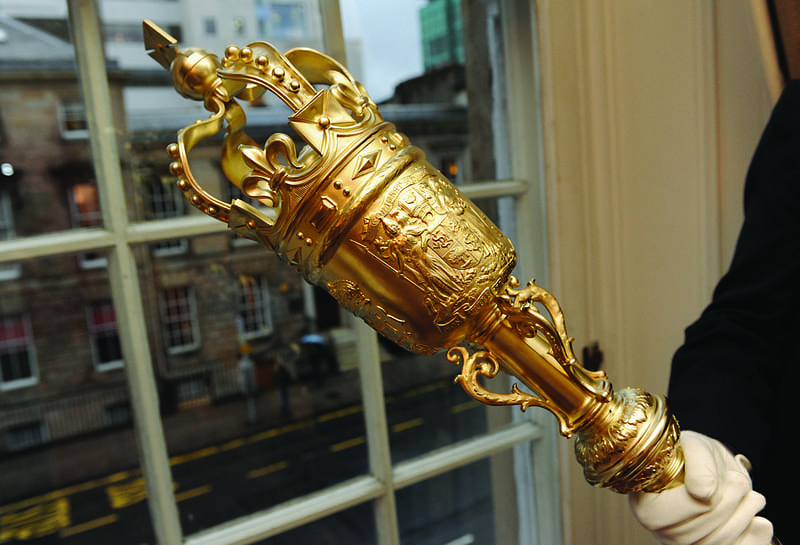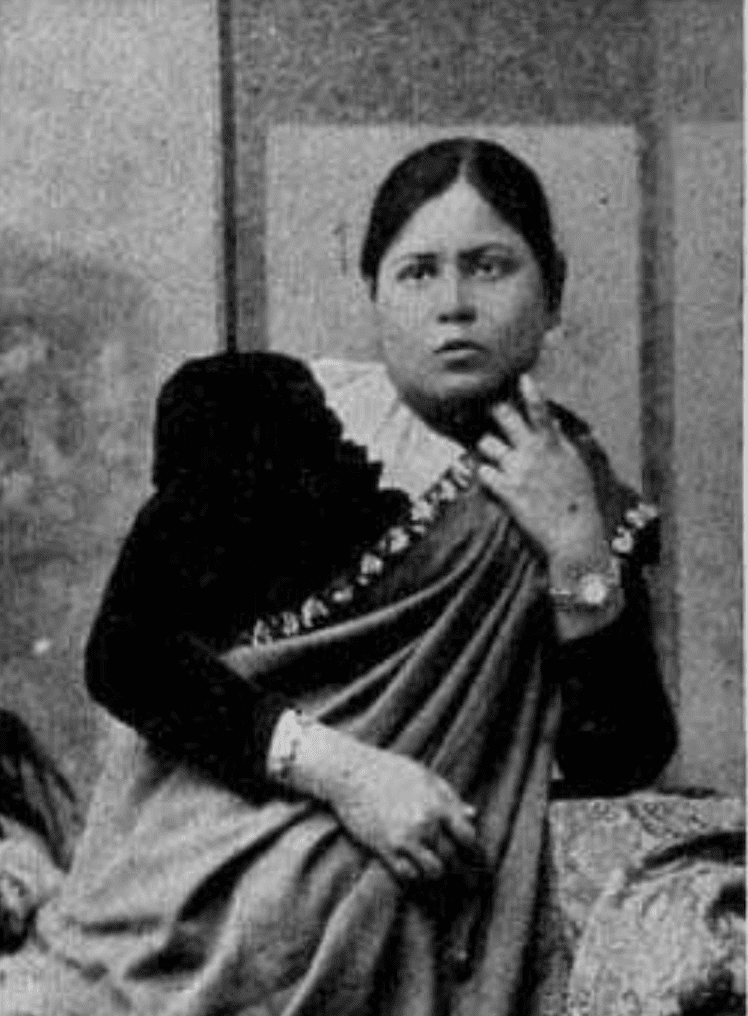Kristin Hay
Admitting Women Series: Part Four
Part Three / Part Two / Part One
Kristin Hay is a medical historian and a doctoral research intern at the Royal College of Physicians and Surgeons of Glasgow. She is currently working on the ‘Admitting Women’ project which explores gender inequality within the College’s history as part of the Heritage and Inclusion Programme.
The turn of the twentieth century was a jovial period for the then-titled Faculty of Physicians and Surgeons of Glasgow. They celebrated their ‘tercentenary’ – or 300th anniversary – in 1899, and a decade later were given the prestigious title of Royal Faculty of Physicians and Surgeons of Glasgow, something which the Faculty’s Council and its Fellows had sought repeatedly since the 1850s. [1] However, the early 1900s was also a time of increasing concern for the Faculty, as their influence and status within the medical communities of Glasgow and the West of Scotland was in decline.

Due to the increasing accessibility of Scottish universities, fortified by the efforts of the renowned Carnegie Trust in 1901, fewer and fewer medical students were entering the medical profession through the extramural schools, threatening the role of medical corporations as licensing bodies. Furthermore, a move towards postgraduate training for practitioners in hospitals led to a significant drop in candidates for the Fellowship Diploma – with an average of around 5 admissions per year between 1905 and 1913. As Hull and Geyer-Kordesch note, by the end of the First World War, the reputation of the Royal Faculty was poor, and reform – particularly concerning the Fellowship – became seen as ‘essential to the institution’s survival.’ [2]
In contrast to the enduring professional woes of the Faculty, the representation of women in medicine was on the rise. Between 1900 and 1909, 8.1 per cent of successful TQ candidates were women, an increase of 5 per cent from the late 1880s. [3] As discussed previously, more and more women were also graduating in medicine from the Scottish universities. Despite this, the Faculty continued to refuse women entry to the Fellowship in the opening years of the twentieth century.
In 1905, Dr Jessie MacLaren MacGregor, one of the first women to receive a medical degree from Edinburgh University, wrote to the Faculty on behalf of ‘a sub-committee of Medical Women practicing in Scotland,’ enquiring:
‘First on what grounds women were held to be ineligible for the Fellowship, and, secondly, if their hindrance might possibly be reviewed.’
Letter from Miss Jessie McGregor [sic.] (1905) [4]
It is interesting to note that despite her postnominals, the Faculty refused to recognise Jessie MacGregor with the proper title of Doctor, and instead refer to her as ‘Miss’ throughout the discussion. [5] Without stating the reasons for their refusal to admit women, the Faculty replied to the effect that:
‘Since the date of this question being decisively settled by vote of the Faculty on 2nd May 1892 nothing had occurred which would be likely to lead them to reverse that decision.’
Response from Faculty Secretary to Jessie MacGregor (1905) [6]
Yet, change had been occurring within the medical profession in favour of increasing opportunities for women. Firstly, in 1899, the Faculty paid close attention to a case concerning the Royal College of Veterinary Surgeons who were taken to court by their own members and Fellows teaching at the New Veterinary College Edinburgh for refusing to admit a woman to their examination. The student in question, it was added, ‘had fulfilled all requirements that would have admitted a male student to the examination’. During the trial, the pursuers argued that:
‘In refusing the application the defenders acted ultra vires, and in contravention of the Charters and Act of Parliament…[the College] have not merely checked the natural development and imperilled the future prosperity of the incorporation by excluding women from its membership, but exposed it to a serious claim of damages at the instance of the lady referred to.’
‘Williams and others v Royal College of Veterinary Surgeons’ (1899) [7]
The close proximity between the role of the Faculty and that of the Royal College of Veterinary Surgeons clearly piqued their interest and was seen to have possible repercussions for the Faculty’s own position towards female fellows. Then, just a few years later, the Royal College of Surgeons of England opened their Fellowship examination to women ‘subject to the provisions of the Medical Act 1876, and of the ByeLaws of the College’ – thus creating a legal precedent for the Faculty. [8]
In 1910, a second request for the Faculty to admit women as fellows came from Dr Annie Louise McIlroy – the first woman to receive a medical degree from the University of Glasgow (indeed, the first woman from Glasgow to receive an MD!), and latterly the first female Professor of Medicine in the United Kingdom. An image of Dr McIlroy during her war service is located in the Scottish Women’s Hospital archive held at the College:

Dr McIlroy’s request was immortalised in the Faculty minutes, in which she wrote:
‘I beg for permission to become a candidate for the Examination held for the Fellowship of the Faculty of Physicians and Surgeons, Glasgow. My reason for application is that I find the Fellowship necessary for the holding of teaching posts.’
Letter from Dr Annie Louise McIlroy (1910)
Despite there being no change in the laws relating to women in medicine between 1897 – when the Faculty first refused a female practitioner – and Dr McIlroy’s request in 1910, the attitudes within the Faculty and the medical profession more broadly towards women had softened. Citing explicitly the ‘Regulations for the Fellowship of the Royal College of Surgeons of England’, the Council decided in June 1910:
‘On the motion of Dr Glaister seconded by Dr Adams, to recommend to the Faculty that admission to the Fellowship shall be open to women equally with men, and that provision be made for this in the regulations of the Faculty.’
‘Application by Dr A. Louise McIlroy for the Fellowship of the Faculty’, (1910) [9]
The following October, the Faculty debated the admission of women to the Fellowship, where The President and Dr John Glaister once again supported the motion. Despite the protests of George Middleton and James Hamilton, as well as the ‘expressions of the views’ of several Fellows, the motion was carried by 34 votes in favour and six against. In November 1910, the Regulations of the Faculty were consequently amended so that:

‘Admission to the Fellowship of Faculty shall be open to women equally with men.’ [10]
Although she would not be the first woman admitted to the Faculty, it was through the request of Dr Annie Louise McIlroy that the Faculty finally relented on their decades-long resistance to female Fellowship. Two years later, in 1912, Jamini Sen – a distinguished medical practitioner and recipient of the prestigious Lady Dufferin Fund, educated the University of Calcutta – became the first woman to successfully pass the Fellowship examination and become a Fellow qua Surgeon of the Royal Faculty of Physicians and Surgeons of Glasgow. [11] As per the rules of the Medical Amendment Act of 1876, however, she was unable to stand for election or hold any offices.

The history of women’s admission to the Faculty, both as licentiates and fellows, underscores the ways in which institutional cultures and professional gate-keeping continued to hinder women’s careers within medicine in spite of the progressive legislation of the late-nineteenth century. It reveals how the views of individual, yet influential, men decided the fates of female physicians and surgeons throughout the course of the Victorian period and throughout the twentieth century. Yet it also reveals the efforts of individual trailblazers, previously marginalised within history, who slowly chipped away at the barriers to gender equality and paved the way for greater women’s representation in the present.
_________________________________________________________________________________________________
References:
[1] RCPSG, GB 250 1/1/1/12, Faculty Minutes, ‘Celebration of Tercentenary of the Faculty’ (5 March 1900) p. 341
[2] A. Hull and J. Geyer-Kordesch, The Shaping of the Medical Profession: The History of the Royal College of Physicians and Surgeons of Glasgow, 1858-1999 (London: The Hambleon Press, 1999), p. 83-85
[3] H.M. Dingwall, ‘The Triple Qualification examination of the Scottish medical and surgical colleges, 1884-1993’ Journal of the Royal College of Physicians of Edinburgh 40 (2010) p. 272
[4] RCSPG, GB 250 1/1/3/5, Minutes of Council, ‘Letter from Miss Jessie McGregor’ [sic.] (16 July 1905)
[5] The British Medical Journal similarly refused to recognise her as Dr Jessie MacLaren MacGregor, using the prefix ‘Miss’ in her obituary in 1906.
[6] RCSPG, GB 250 1/1/3/5, Minutes of Council, ‘Jessie MacGregor’ (25 October 1905)
[7] RCPSG, GB 250 1/8/85/1, newspaper clipping, Glasgow Herald, ‘Williams and others v Royal College of Veterinary Surgeons’ (7 July 1899)
[8] RCPSG, GB 250 1/1/3/6, Minutes of Council, ‘Application by Dr A Louise McIlroy for the Fellowship’ (3 June 1910) p. 60
[9] RCPSG, GB 250 1/1/1/13, Faculty Minutes, ‘Application by Dr A. Louise McIlroy for the Fellowship of the Faculty’, (6 June 1910) p. 255
[10] RCPSG, GB 250 1/1/1/13, Faculty Minutes, ‘Admission of Women to the Fellowship’ (3 Oct 1910) p. 261
[11] RCPSG, GB 250 1/1/1/13, Faculty Minutes, ‘Election of Miss Jamini Sen and Dr William Manson as Fellows’ (6 May 1912) pp. 368-369. For more detail on Jamini Sen’s life and work, see S. Ray,‘Women Doctors’ Masterful Manoeuvrings: Colonial Bengal, Late Nineteenth and Early Twentieth Centuries’, Social Scientist 42:3/4 (2014) pp. 59-76


Leave a Reply
You must be logged in to post a comment.